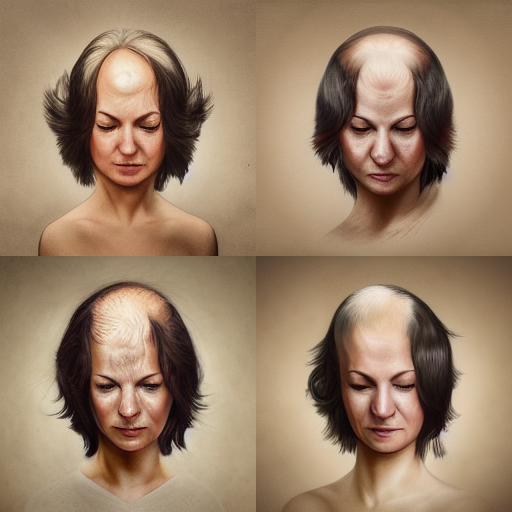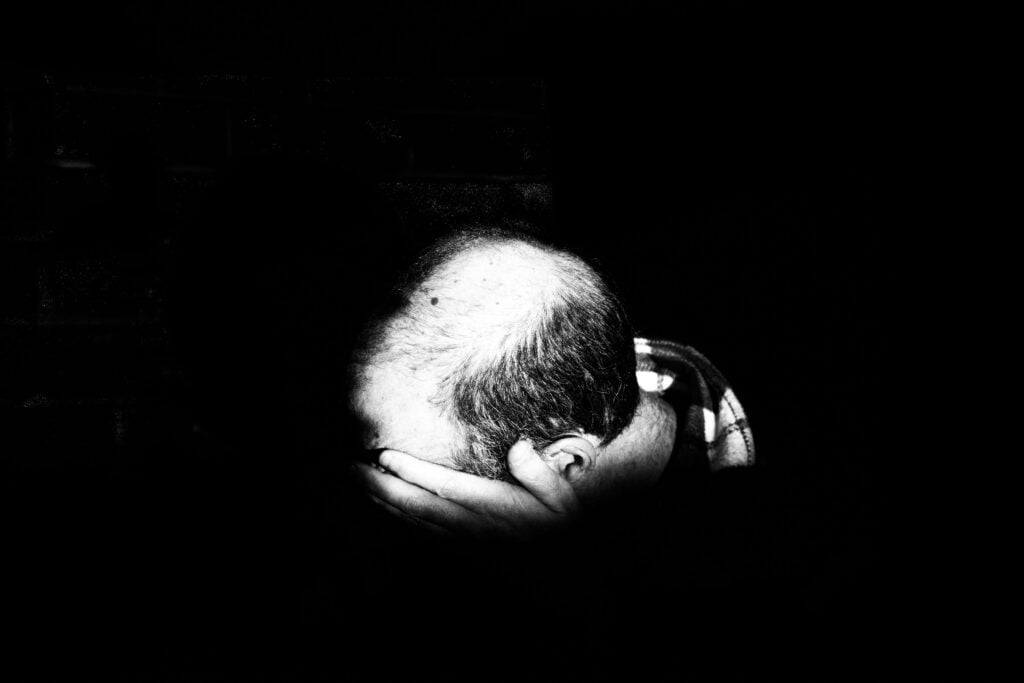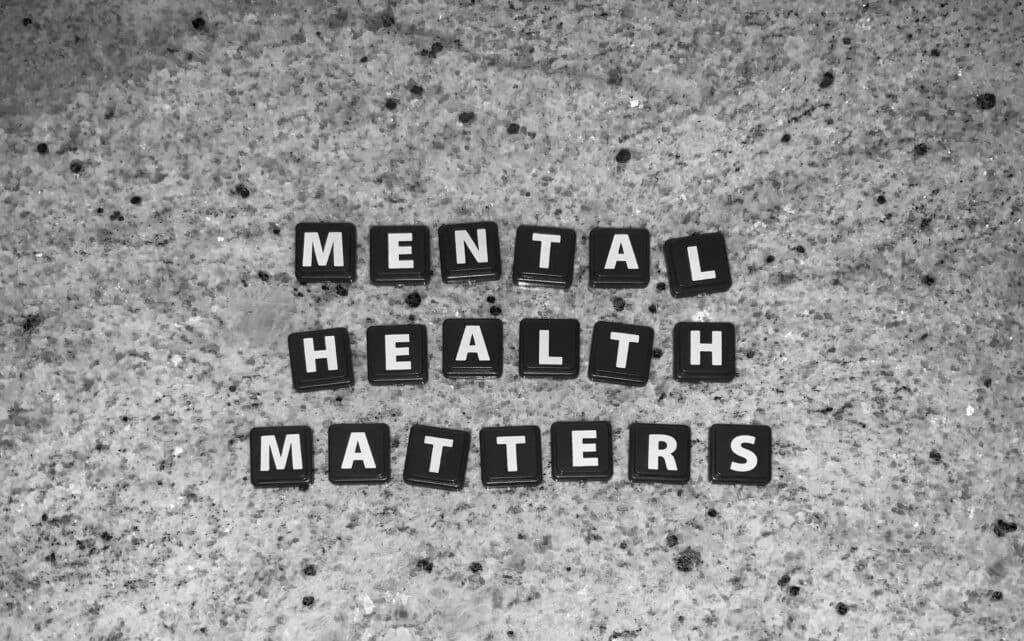Hair loss is something that affects men and women of all ages. It can begin even in teens (hitting caucasian men the most) and could affect up to 13% of post-menopausal women.

It can be caused by numerous factors, including genetics, hormones, and age. While hair loss is a natural process that happens to everyone, it can be devastating for those who experience excessive or premature hair loss.
Several treatments are available for hair loss, including medications, surgery, and hair replacement therapy.
The following five points discuss different aspects of the factors leading to hair loss and some hints about its diagnosis and treatment.
1. Types of hair loss
There are many types of hair loss, each with its own causes and treatments. Here are the most common types of hair loss:
Androgenetic alopecia, also known as male-pattern baldness or female-pattern baldness, is the most common type of hair loss. It is caused by a combination of genes and hormones. The hormone testosterone is a key player, as it causes hair follicles to shrink. This type of hair loss usually starts with a receding hairline in men and thinning hair on the top of the head in women.
Alopecia Areata is an autoimmune disease that causes hair to fall out in patches. It can occur anywhere on the body but is most common on the scalp. The cause is unknown, but it is thought to result from a malfunctioning immune system.
Alopecia Areata is a chronic condition that can come and go over time.
Telogen Effluvium is a type of hair loss that is caused by a change in the normal hair growth cycle. Normally, about 80-90% of the hair on your head is in the growth phase, while the other 10-20% is in the resting phase. With Telogen Effluvium, more hair than normal enters the resting phase. Hair loss usually occurs a few months after a major event such as childbirth, a major illness, or surgery.
Traction Alopecia is a type of hair loss that is caused by physical stress on the hair follicles. This type of hair loss is most common in women who wear their hair in tight braids or ponytails. Over time, the hair follicles can become damaged, and the hair can eventually fall out.
Scarring Alopecia is a type of hair loss that is caused by damage to the hair follicles. This hair loss can result from an injury, skin disease, or a reaction to a hair product. Scarring alopecia can lead to permanent hair loss.
2. Causes of hair loss
The causes of hair loss are many and can vary from person to person. Some of the most common causes of hair loss include genetics, hormonal changes, scalp diseases, and hair treatments.
Genetics is often the root of hair loss, as it is passed down from parents to their children. If one or both of your parents have a history of hair loss, you are more likely to experience it as well. Hormonal changes, such as those that occur during menopause, can also cause hair loss. Scalp diseases, such as seborrheic dermatitis, can affect the health of your hair and lead to hair loss. And hair treatments, such as chemical relaxers and hair dye, can cause hair loss if they are not used properly.
If you are experiencing hair loss, it is important to see a doctor to determine the cause. Once the cause is identified, you can work with your doctor to develop a treatment plan that is right for you. Many treatments are available for hair loss, including medications, scalp treatments, and hair restoration surgery.
If you are experiencing hair loss, don’t panic. There are many treatments available that can help you regain your hair. Talk to your doctor to find the best treatment for you.
3. Treatment for hair loss
There are a variety of treatment options available for those experiencing hair loss. The most common type of treatment is medication, which can be prescribed by a doctor or purchased over the counter. There are a variety of medications available, each of which works in different ways to help promote hair growth. If medication is not successful, or the individual does not wish to take medication, there are a variety of other treatment options available, including hair restoration surgery and hair replacement systems.
One popular over-the-counter product (but schedule 2 though) is Minoxidil (the commercial brand is Rogaine). Minoxidil is available as a topical solution and is applied directly to the scalp. It is thought to work by widening the blood vessels in the scalp, which increases blood flow and brings more nutrients to the hair follicles. This helps to promote hair growth.
Another popular product is Finasteride. Finasteride is a prescription medication that is taken orally. It is a type of medication called a DHT blocker. DHT is a hormone that is thought to contribute to hair loss. By blocking DHT, finasteride helps prevent hair loss and may promote growth.
Another popular treatment for hair loss is Proctor and Gamble’s HairMax laser comb. The HairMax laser comb uses low-level laser therapy to promote hair growth. Some studies have shown that the HairMax laser comb effectively treats hair loss.
Hair restoration surgery is a procedure that surgically removes hair from one body area and transplants it into another. This surgery is most commonly used to restore hair to the scalp but can also be used to restore hair to other areas of the body, such as the eyebrows or beard. Hair replacement systems are a popular alternative to hair restoration surgery. These systems consist of a hairpiece that is worn on the head and can be made from either human hair or synthetic fibres.
In addition to the treatment options above, many find that a compounded and combined topical solution of Minoxidil and Finasteride is the most effective.
At Chaparral Pharmacy, we compound the combined Minoxidil and Finasteride in a controlled environment to ensure the highest quality and potency. We can also prepare different strengths and compositions of that topical solution according to what was prescribed by the doctor.
4. Home remedies for hair loss
It’s no secret that hair loss is a common issue in men and women. While many commercial options are available for those seeking to treat hair loss, there are also many home remedies that can be just as effective.
One popular home remedy is apple cider vinegar. Apple cider vinegar is thought to help hair growth by balancing the pH levels of the scalp. To use this remedy, mix one tablespoon of apple cider vinegar with one cup of water. Apply the mixture to the scalp and hair, and leave it in for about 15 minutes. Then, rinse it out and shampoo your hair as usual.
Another popular home remedy is castor oil. Castor oil is believed to help hair growth by increasing circulation to the scalp. To use this remedy, apply a few drops of castor oil to the scalp and massage it. Leave the oil in overnight, and then shampoo your hair as usual in the morning.
Yet another popular home remedy is coconut oil. Coconut oil is thought to help hair growth by strengthening hair follicles. To use this remedy, apply a small amount of coconut oil to the scalp and hair, and massage it. Leave the oil in overnight, and then shampoo your hair as usual in the morning.
There are also some natural products that are thought to help promote hair growth. Some of these products include biotin, saw palmetto, and niacin. Biotin is a vitamin that is thought to help hair growth by strengthening the hair shaft. Saw palmetto is a plant that is thought to help block DHT. And niacin is a vitamin thought to help improve blood circulation, which may help promote hair growth.
There are also some natural treatments for hair loss, such as scalp massage and acupuncture. Scalp massage can help to improve blood circulation to the scalp, which can help to promote hair growth. Acupuncture can help to improve the overall health of the scalp, which can also promote hair growth.
While there are many home remedies for hair loss, it’s important to note that not every remedy will work for every person. It’s important to try a few different remedies to find the one that works best for you.
It is noteworthy that you must consult your physician before trying any home remedies.
5. Prevention of hair loss
There are many ways to prevent hair loss, many of which are simple and inexpensive.
One way to help prevent hair loss is to ensure you get enough protein in your diet. Protein is necessary for healthy hair, and a lack of protein can lead to hair loss. Another way to help prevent hair loss is to ensure you get enough vitamins and minerals.
A lack of vitamins and minerals can lead to several health problems, and hair loss is just one potential side effect. Some of the most important vitamins and minerals for hair health include biotin, vitamin B6, vitamin B12, zinc, and iron. A deficiency in any of these nutrients can lead to hair loss.
While a lack of vitamins and minerals may not be the root cause of your hair loss, it’s important to ensure that you get enough of these nutrients in your diet. There are many foods that are high in these nutrients, and by incorporating more of these foods into your diet, you may be able to improve your hair health.
Some good sources of biotin include eggs, nuts, and salmon. Vitamin B6 can be found in chicken, pork, and bananas. Vitamin B12 is found in beef, lamb, and eggs. Zinc is found in seafood, red meat, and poultry. And finally, iron can be found in leafy green vegetables, red meat, and fortified foods.
Another way to prevent hair loss is to keep your scalp healthy. Make sure you are using a good quality shampoo and conditioner, and make sure you are not using any products that are harsh on your scalp. If you use a hairdryer, make sure you use it in a cool setting.
Generally, if you are experiencing hair loss, it is important to see a doctor to determine the cause. Hair loss has many different causes, and the best way to treat it depends on the cause. If the cause of your hair loss is something that can be treated, treatment will likely help to stop the hair loss and reverse the damage that has been done.
There are many different ways to prevent hair loss, and the best way to find out what works best for you is to experiment. Try different things and see what works best for you. The most important thing is to be patient and stick with it. Finding what works best for you may take some time, but it is worth it in the end.
Summary
Several products on the market claim to help promote hair growth. Some of these products are available over the counter, while others require a prescription.
What is the best way to promote hair growth? The answer may vary depending on the individual. Some people may find that over-the-counter products such as Minoxidil or Finasteride (or a combined compounded mixture of both) work well for them. And still, others may find that a natural product or a home remedy such as biotin or coconut oil works best for them. Ultimately, the best way to promote hair growth is the way that works best for you.
Thanks for reading this blog post. If you like it, please share it using the buttons below with your friends, family, and colleagues.




